Arrival of Vietnamese Refugees in Canada National Historic Event

© Photo attributed to MCpl Bryantowich, Canada. Department of National Defence / Library and Archives Canada / e999901782-u
The arrival of Vietnamese refugees was designated a national historic event in 2023.
Historical importance: after the end of the Vietnam War in 1975, Canada accepted nearly 200,000 Vietnamese refugees who fled persecution and difficult living conditions, and braved significant dangers.
Commemorative plaque: no plaque installedFootnote 1
Arrival of Vietnamese Refugees in Canada
After the end of the Vietnam War, Canada admitted, between 1975 and the 1990s, approximately 200,000 refugees who fled persecution and difficult living conditions from Vietnam as well as Cambodia, Laos, and other impacted Southeast Asian areas. Their arrival reflects the impact of the modernization of Canada’s immigration laws, which became more accepting of refugees in the 1960s and 1970s. It also reflects the increasingly receptive and supportive Canadian public opinion toward refugees’ struggles in the wake of the Hai Hong incident in 1978, which led tens of thousands of Canadians and many organizations to sponsor refugees. Through public support programs and their own perseverance, Vietnamese refugees were able to build new lives and form communities across Canada, notably in Montréal, Toronto, and Vancouver, but also in smaller cities and towns, where they contributed to Canada’s economic and cultural prosperity.
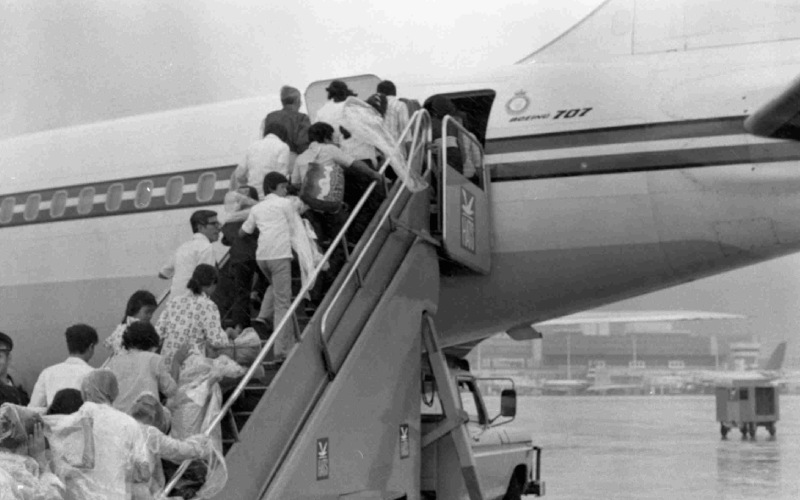
© Photo attributed to MCpl Bryantowich, Canada. Department of National Defence / Library and Archives Canada / e999901766-u
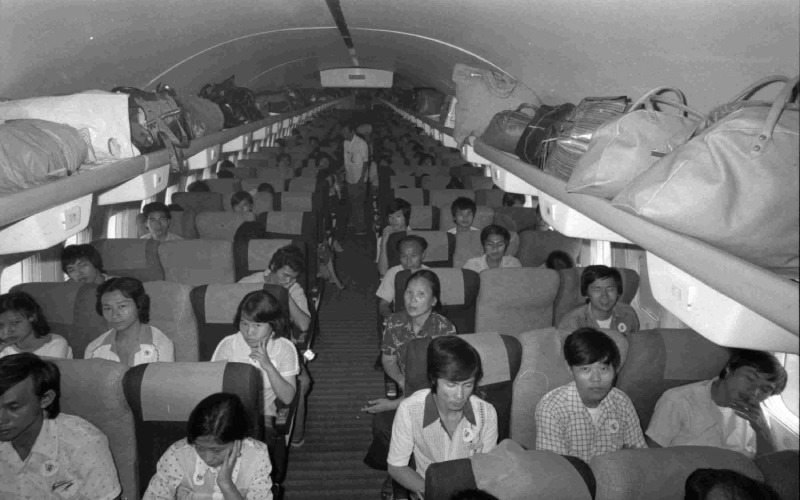
© Photo attributed to MCpl Bryantowich, Canada. Department of National Defence / Library and Archives Canada / e999901768-u
When the Vietnam War ended, Vietnam came under the control of a communist regime, and many Vietnamese people fled in fear of persecution. Some refugees left the country by land through perilous jungle, but most travelled by water and had to contend with the dangers of the sea, piracy, and Vietnamese authorities who were trying to stop the exodus. By the end of 1975, approximately 6,000–7,000 Vietnamese people arrived in Canada. Some were refugees under the 1951 United Nations (UN) Convention relating to the Status of Refugees, while others joined family members and relatives. The majority, about 65 per cent, were educated Francophones who settled in the Montréal region. From 1976 to 1977, Canada accepted only 630 refugees, partly due to a scandal surrounding the arrival in Montréal of former South Vietnamese General Dang Van Quang who was accused of war crimes. But in 1976, the Canadian government enacted the new Immigration Act to allow more groups to move to Canada, and it included refugees as a distinct class of immigrants for the first time. A special category of refugees, the Indochinese Designated Class, was created to accelerate processing of these refugees’ files and bring them to Canada sooner.

© Photo attributed to MCpl Bryantowich, Canada. Department of National Defence / Library and Archives Canada / e999901773-u
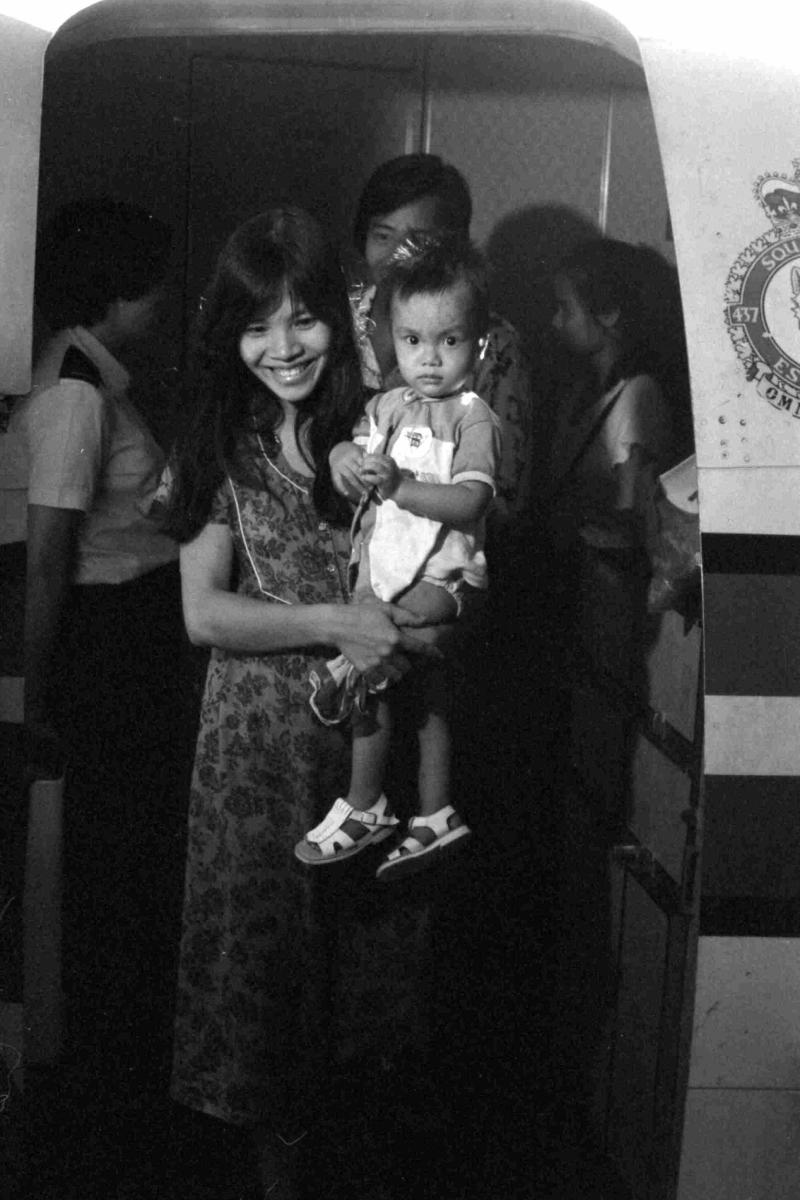
© Photo attributed to MCpl Bryantowich, Canada. Department of National Defence / Library and Archives Canada / e999901772-u
When in November 1978 Malaysia refused to allow the cargo ship Hai Hong to land with 2,500 refugees on board, Canada admitted 600 refugees from this ship, and other countries offered to resettle the remainder. This marked a turning point in Canadian attitudes. Just before the UN conference on refugees and displaced persons in July 1979, the Canadian government declared it would admit 50,000 refugees from Vietnam, Cambodia, and Laos. Half of the refugees would be supported by the government, and the other half would be sponsored privately by Canadians. Many citizens and groups sponsored refugees, including Operation Lifeline, which was launched in Toronto and expanded with 60 chapters across Canada, Project 4000 in Ottawa, and the Montréal Committee to Save the Boat People. By the end of the 1990s, 140,000 refugees from Southeast Asia, mostly from Vietnam, had arrived in Canada, and about 60,000 more Vietnamese people joined their relatives in Canada under the UNHCR sponsored Orderly Departure Program.
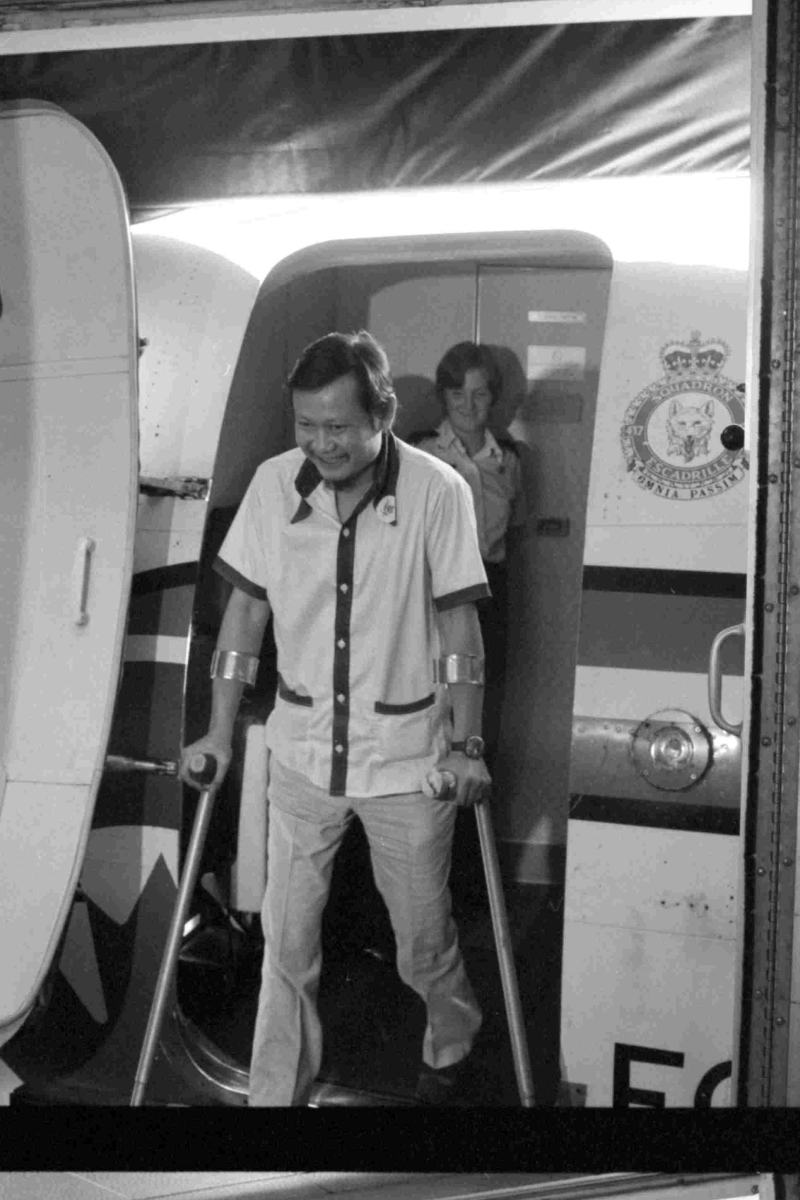
© Photo attributed to MCpl Bryantowich, Canada. Department of National Defence / Library and Archives Canada / e999901774-u
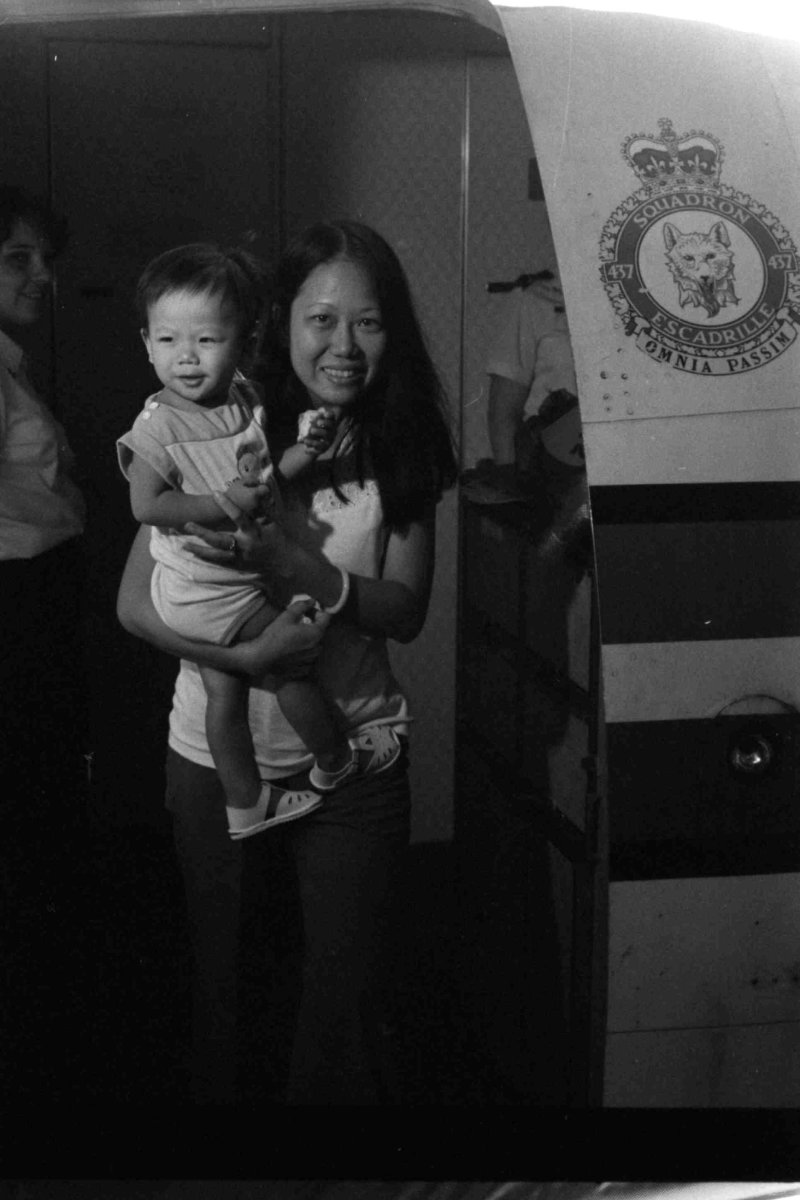
© Photo attributed to MCpl Bryantowich, Canada. Department of National Defence / Library and Archives Canada / e999901770-u
In 1986, the UN presented Canada with the Nansen Refugee Award for its sustained effort to help refugees worldwide, including those from Vietnam. This was the only time this medal has been awarded to the people of a country as a whole.
This press backgrounder was prepared at the time of the Ministerial announcement in 2024.
The National Program of Historical Commemoration relies on the participation of Canadians in the identification of places, events and persons of national historic significance. Any member of the public can nominate a topic for consideration by the Historic Sites and Monuments Board of Canada.
- Date modified :